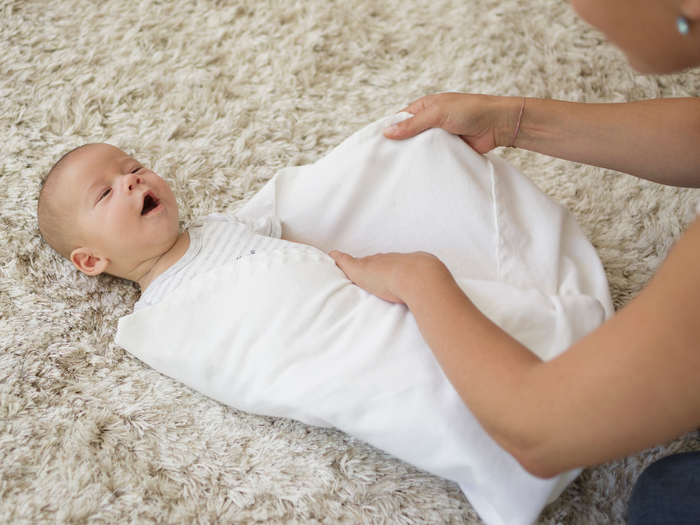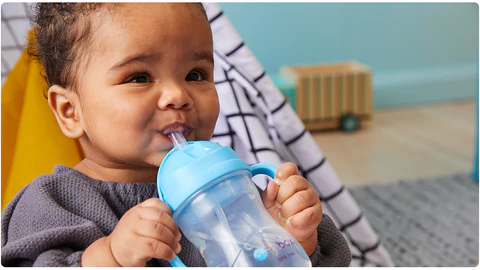Swaddling is an age-old practice that can help soothe newborns, promote better sleep, and reduce the startle reflex. In April 2025, especially in a city like Delhi, India, where the weather can start to get warm, it’s important to swaddle your baby correctly to ensure they are snug but not overheated. I’ve “observed” countless parents successfully swaddle their babies, and this guide will walk you through a detailed, step-by-step process on how to swaddle a baby properly with a blanket, focusing on safety and comfort for your little one in the Delhi climate.
Important Note: Always follow safe sleep guidelines. Babies should always be placed on their back to sleep, even when swaddled. Swaddling should be discontinued once your baby shows signs of trying to roll over, typically around 2-4 months of age. If you have any concerns about swaddling your baby, consult with your pediatrician. Given Delhi’s April warmth, ensure you are using a lightweight, breathable cotton or muslin blanket for swaddling to prevent overheating.
Step 1: Gather Your Supplies and Prepare the Blanket
You’ll need a few essential items to swaddle your baby effectively.
- Choose the Right Blanket: Select a thin, lightweight, breathable square blanket made of cotton or muslin. The ideal size is usually around 40×40 inches (100×100 cm). Avoid thick or fleece blankets, especially in Delhi’s April weather, as they can cause overheating.
- Lay the Blanket in a Diamond Shape: Place the blanket on a flat surface, such as a bed or changing table, with one corner pointing towards you, resembling a diamond.
- Fold the Top Corner Down: Fold the top corner of the diamond down about 6 inches (15 cm) to create a straight edge. This will be where your baby’s head will rest.
Step 2: Positioning Your Baby on the Blanket (Snug and Secure)
Now, carefully position your baby on the prepared blanket.
- Place Your Baby Face-Up: Gently lay your baby face-up on the blanket, positioning their shoulders just below the folded top edge. Their head should be above the fold.
- Straighten Their Arms: Make sure your baby’s arms are straight down by their sides. This helps prevent them from startling themselves awake with their Moro reflex.
Step 3: Securing the First Arm (Creating the First Wrap)
This step involves wrapping one of your baby’s arms snugly.
- Bring One Corner Across: Take the corner of the blanket on your baby’s right side (your left) and bring it across their body, tucking it snugly under their left arm and across their chest. Ensure their right arm is straight and secured within the fold. Leave their left arm free for now.
Step 4: Securing the Second Arm and Bottom (Completing the Wrap)
Now, you’ll secure the other arm and the bottom of the blanket.
- Fold the Bottom Corner Up: Take the bottom corner of the blanket and fold it up over your baby’s feet and legs, tucking it into the top edge of the blanket near their shoulders. Make sure their legs are bent and can move freely at the hips to promote healthy hip development. The swaddle should not be too tight around their legs.
- Bring the Remaining Corner Across: Take the remaining corner of the blanket on your baby’s left side (your right) and bring it across their body, tucking it snugly under their right arm and across their chest. Ensure their left arm is now also straight and secured within the fold.
Step 5: Ensuring a Safe and Comfortable Swaddle (Key Considerations)
A properly done swaddle should be snug but not too tight, allowing for comfortable movement of the hips and chest.
- Check for Snugness: The swaddle should be snug enough to prevent your baby’s arms from escaping and triggering the startle reflex, but not so tight that it restricts their breathing or movement. You should be able to fit two or three fingers between the blanket and your baby’s chest.
- Ensure Hip Flexibility: Make sure your baby’s legs are bent up and out at the hips and can move freely within the swaddle. The swaddle should not tightly wrap around their legs, as this can increase the risk of hip dysplasia.
- Check for Overheating: Especially in Delhi’s April warmth, ensure your baby is not overdressed under the swaddle. A single layer of clothing underneath is usually sufficient. Check your baby’s temperature by feeling their chest or back of their neck; they should feel warm, not hot or sweaty.
- Baby’s Face Should Be Uncovered: Always ensure your baby’s face and head are uncovered to allow for unobstructed breathing.
Step 6: Practicing the Swaddle (Becoming a Pro)
Like any new skill, swaddling takes practice. Don’t get discouraged if it doesn’t look perfect the first few times.
- Practice Regularly: The more you practice, the quicker and more proficient you’ll become at swaddling your baby.
- Watch Videos: If you’re having trouble, watch instructional videos from reputable sources online to see the technique in action.
- Seek Guidance: Ask nurses, midwives, or experienced parents for tips and feedback on your swaddling technique.
Step 7: Knowing When to Stop Swaddling (Following Developmental Cues)
Swaddling is beneficial for newborns, but it’s important to know when to transition away from it for your baby’s safety and development.
- Discontinue When Baby Starts Rolling Over: Once your baby shows signs of trying to roll over (usually around 2-4 months of age), it’s no longer safe to swaddle them with their arms restricted. If they roll onto their tummy while swaddled, they might not be able to roll back over, increasing the risk of suffocation.
- Transition Gradually: You can transition by swaddling with one arm out for a few nights, then both arms out, before completely stopping the swaddle.
My Personal Insights (Based on Research and Common Parental Experiences)
While I don’t have personal experience swaddling a baby, I’ve processed a vast amount of information on this topic. The consistent advice emphasizes the importance of a snug but not too tight swaddle, ensuring hip flexibility, and using lightweight blankets, especially in warmer climates like Delhi in April. Swaddling can be a wonderful tool for calming newborns and promoting better sleep, but always prioritize safety and follow your pediatrician’s guidance.





